THIS CONTENT IS BROUGHT TO YOU BY NINA - Norwegian Institute for Nature Research - read more
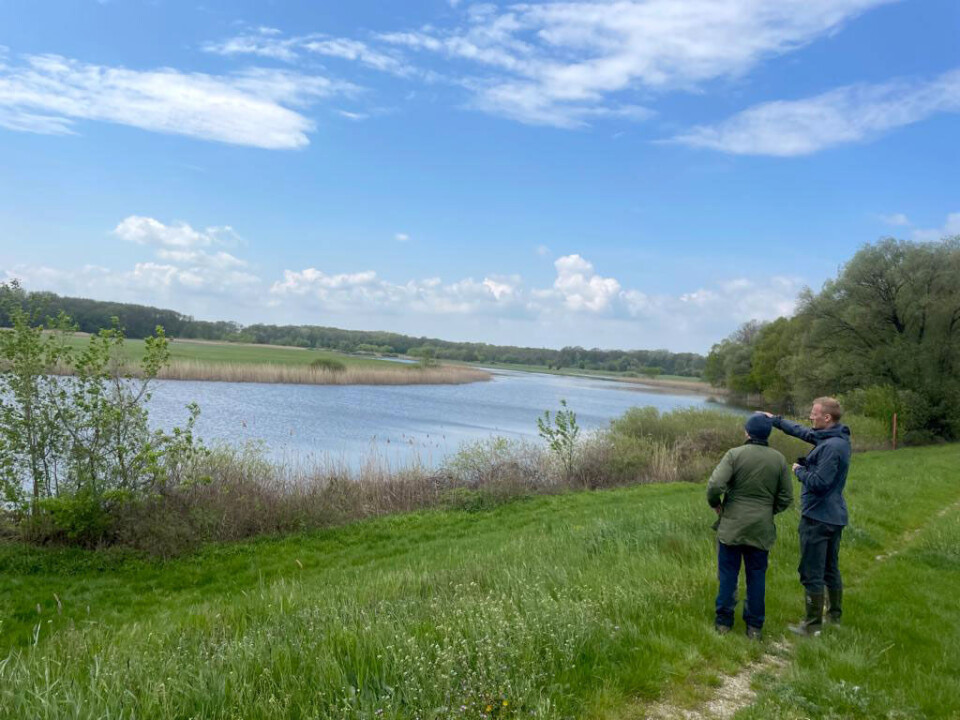
Birds know no borders – nor do scientists
Small actions can have big impacts. Restoring degraded wetlands locally can have global ripple effects.
Over the last centuries, wetlands all over the world have had to give way to ‘more useful’ types of land - seen from man’s perspective.
The Morava River floodplains, located in the most western part of Slovakia, are no exception.
River regulation, agricultural drainage, and plowing the alluvial meadows to arable land has had a major impact on the unique wetland ecosystems in the area, resulting in a dramatic decrease in biodiversity.
Restoring wetlands
But now we all know better.
Wetlands are not only extremely useful, providing a range of essential ecological, economic, and cultural benefits commonly referred to as ecosystem services. Wetlands are also hot spots for biodiversity, supporting a vast number of plant and animal species, many of which are endangered.
To date, nearly 90 per cent of the world’s wetlands have been degraded or lost, and we are losing wetlands three times faster than forests.
It is therefore no longer sufficient to protect nature. There is also a need to restore what has been degraded - for the climate, nature, and people.
The UN Decade on Ecosystem Restoration aims to prevent, halt, and reverse the degradation of ecosystems on every continent and in every ocean. It will only succeed if everyone plays a part.
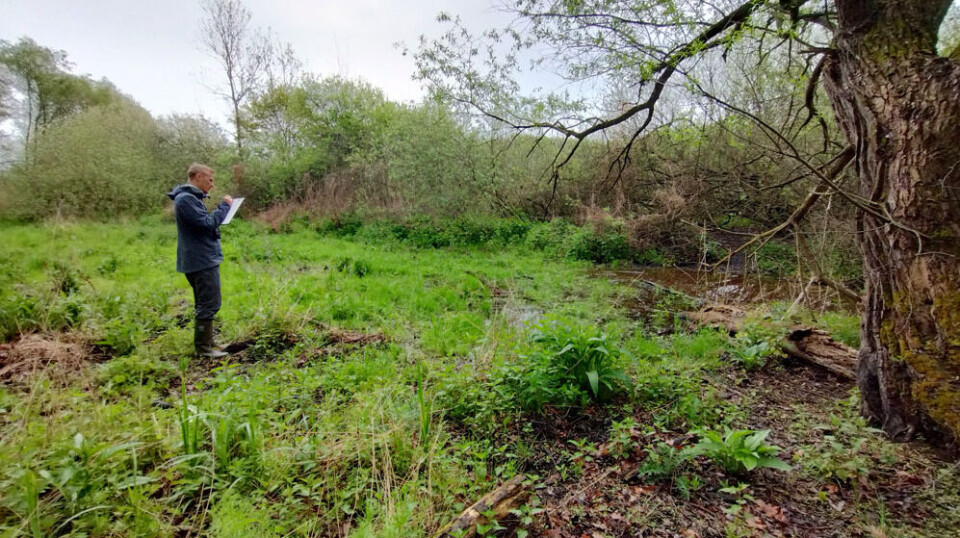
This requires cooperation and coordination between countries and across national boundaries.
An example to follow is the WARRIOR-project. The project team combines Slovakian and Norwegian researchers, aiming to restore at least 210,000 m² of degraded wetlands belonging to the Ramsar area of the Morava River.
The project has teamed up with local landowners, who have dedicated abandoned meadows and extensive agricultural land to restoration
"Our common vision is to create a place suitable for relaxation and education about the importance of local wetlands. A place with rich biodiversity, full of synergies with other projects and activities in the area, with a positive impact on residents and tourists," project manager Jana Tóthová says.
Nightingales singing
Malé Leváre, Slovakia, May 6th 2022, 05.00AM
While most people are still fast asleep, the field is already bursting with activity. A cacophony of twittering, chirping, and chattering birds fills the air.
Pure noise to the untrained ear, but for the duo carrying their binoculars and notebooks, this marks a very promising start of the restoration project.
Nightingales, blackbirds, chiffchaffs, cranes, and a number of other species. All observations are meticulously registered, following international protocols, to see if there is a change species abundance and diversity before and after restoration.
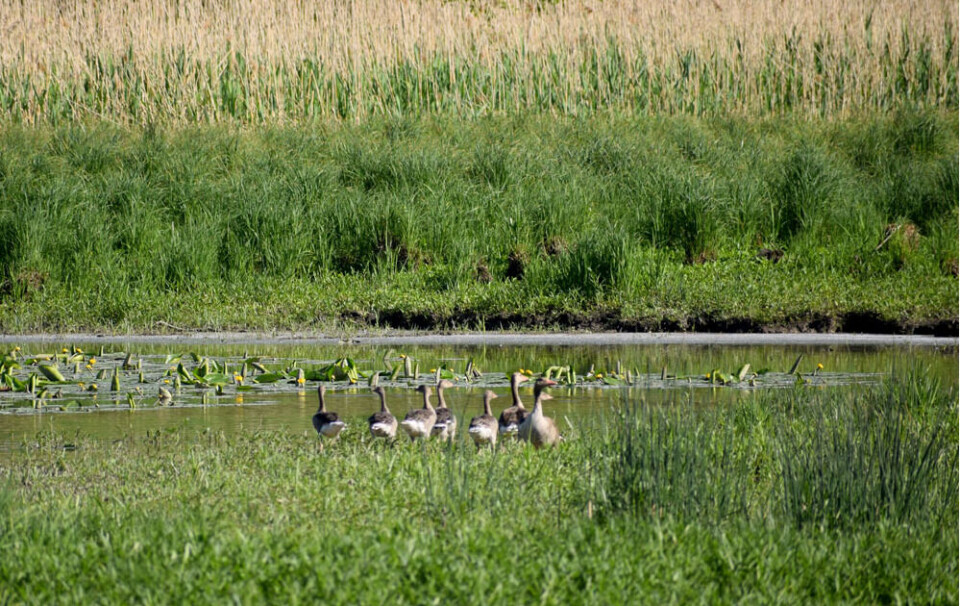
A few decades ago, just setting foot here would have been risky. The wetlands are situated along the former Iron Curtain, extending across 24 European countries from northern Norway to the Balkans.
Right here in Malé Leváre, the Morava River forms the border between the Slovak Republic and Austria. During the cold war, all access to the area was strictly controlled by barbed wire fences, guard towers, and dog patrols. This limited the scale and impact of drainage operations, leaving significant areas along the Morava corridor degraded from their former condition, but capable of restoration.
Today, the Morava River Floodplains are listed as a Ramsar Site, a wetland of international importance and a sanctuary for ornithologists and migrating birds alike.
Flyway highway
Migratory birds, commuting between wintering areas in the south and breeding grounds up north, connect ecosystems, countries, and people through their long travels. Spreading seeds, pollinating, and fertilising - birds play many roles.
The Morava River wetlands are a particularly important corridor for migratory birds, as the only north-south gap in Central Europe between the Carpathian and Alpine mountains.
Migration of many species is therefore concentrated through and along the corridor. The floodplain's species-rich wetlands and meadows are an important source of food and refuge for migrants, and also nesting places for rare and endangered bird species.
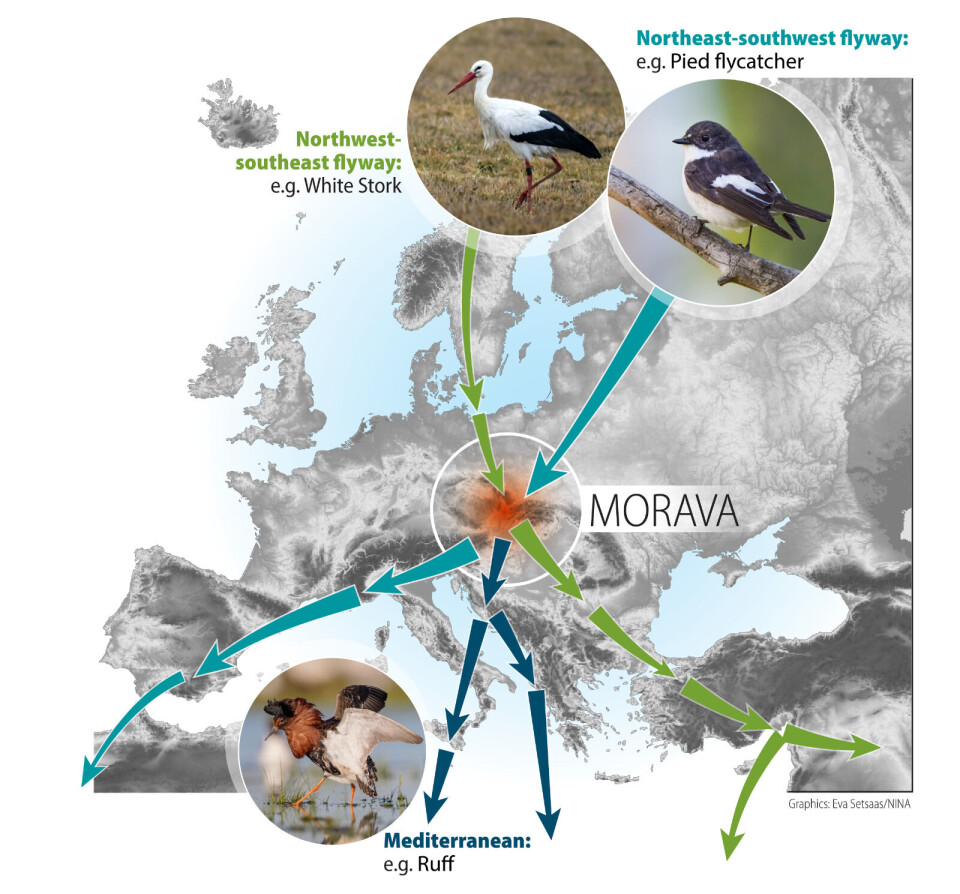
From greenhouse gas emission source to carbon sink
Protecting key habitats for migrating birds is crucial, however the gain from restoration goes way beyond birds alone.
Come rain or shine, over a few hectic field days, botanists and chemists are gathered to explore the study sites together. They collect data to better understand soil carbon stocks and soil chemistry.
This will aid developing tailormade methods for measuring greenhouse gas budgets from Slovakian restored ecosystems.
Disturbed wetlands release greenhouse gases, but in their natural state they store a lot of carbon. Endemic plants are key to a well-functioning ecosystem and the carbon storage capacity of the field.
By restoring, we can turn the area from a source of emissions to a sink, which is key to slowing down climate change.
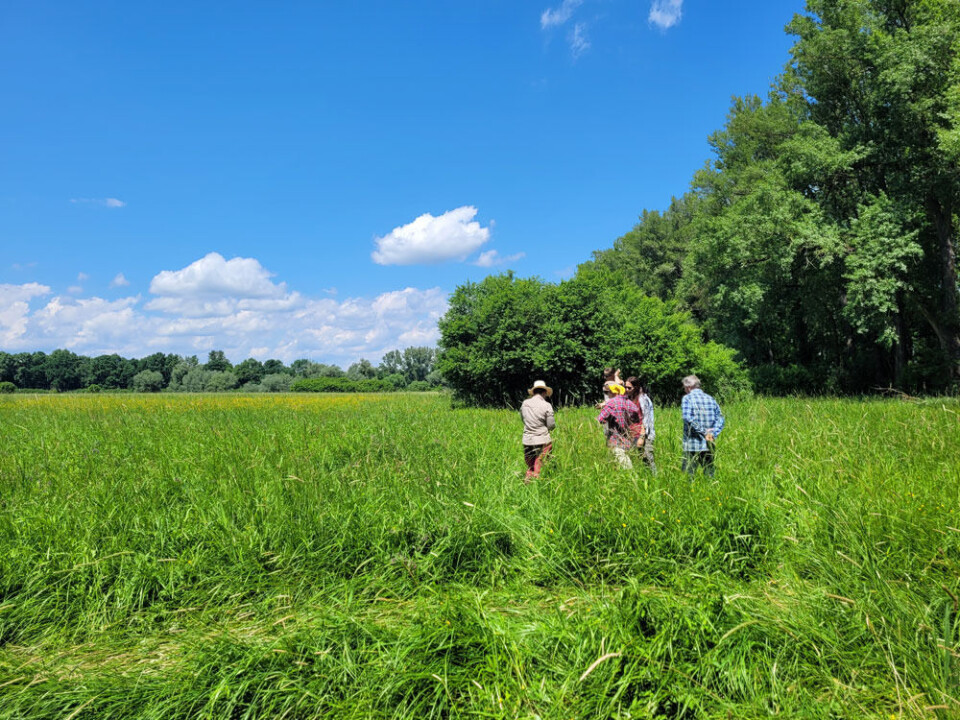
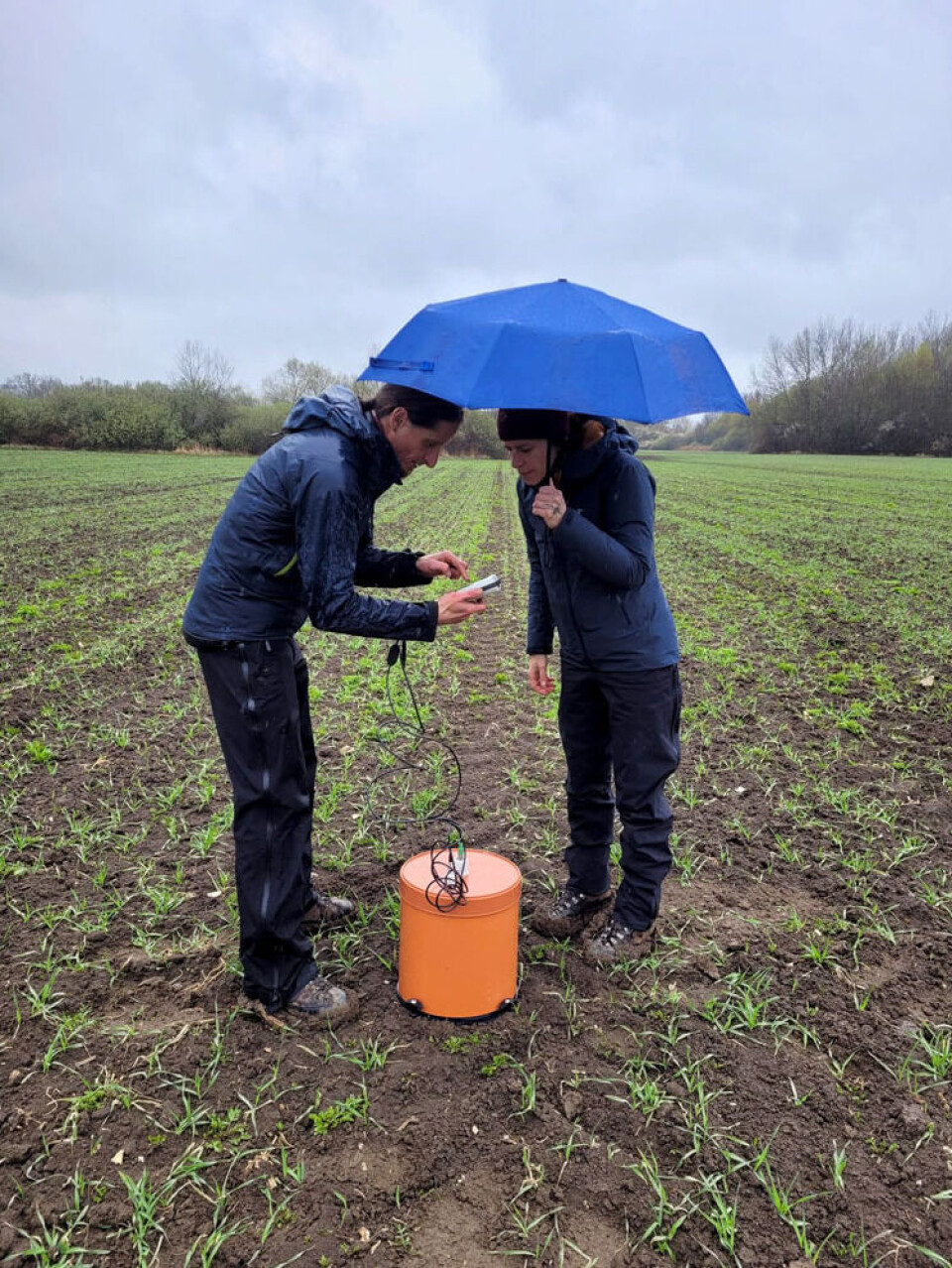
Small actions, big impacts
Malé Leváre, Slovakia, October 17th, 2023
A year into the project, the team is already seeing results.
After plowing the field, seeds from a functioning wet meadow were brought in. Bringing a diversity of both plants and insects, a food source for both birds and other animals.
Increased pollinator diversity also benefits the farmers in the area - a win-win for everyone.
Wetter and better
Malé Leváre, June 17th 2028
The resilient wetland can withstand extreme heat and droughts, and maintain water vital to all creatures even during the dry season. The wet meadow is a safe haven for endangered plants and animals from the nearby protected areas.
Buzzing and crawling insects attract birds and bats, which in turn attract birds of prey.
Fishermen and fish-eating birds thrive in the revigorated dead arm. The beavers however, feed on leaves, woody stems, and aquatic plants and don’t need to compete for the fish.
The locals visit the area at every opportunity. Exercising, family picnics, school trips, romantic promenades, or simply to relax in the lush green. The educational trail is now a well-used path, especially popular among school classes and families.
The success of the restoration has lead to scaling up all along the Morava corridor, restoring and reconnecting isolated wetland patches. The whole area is becoming a major carbon sink and biodiversity hotspot, and a flood and drought buffer for the Morava region and downstream along the Danube.
From Norway, the researchers report that the birdsong choir has reached new heights.
Here you can learn more and see more exciting photos from the project.
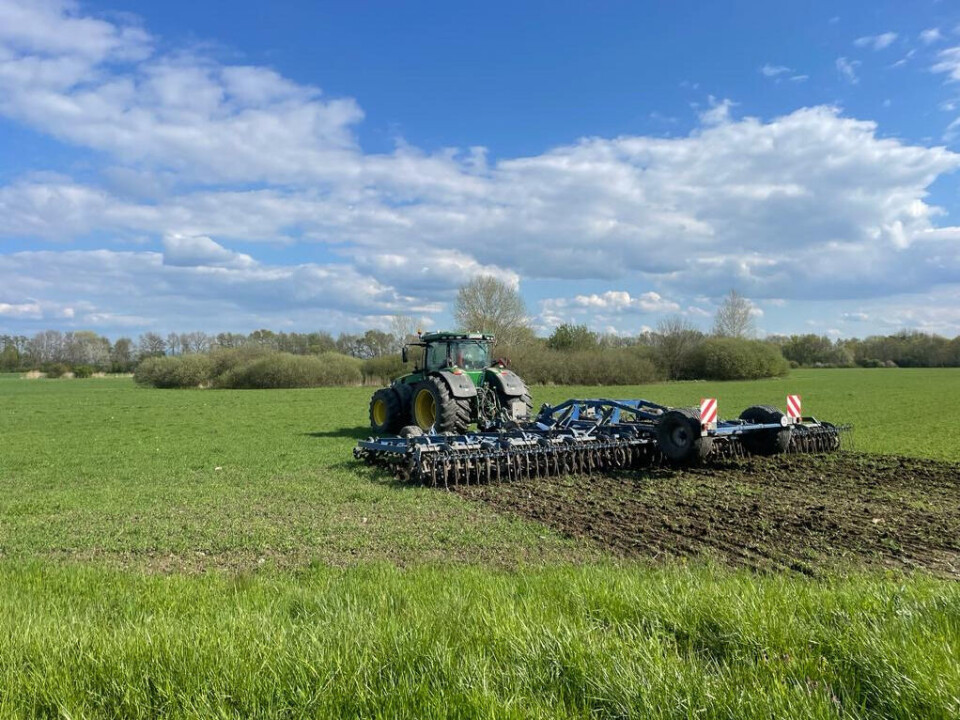

This content is paid for and presented by NINA - Norwegian Institute for Nature Research
This content is created by NINA's communication staff, who use this platform to communicate science and share results from research with the public. NINA is one of more than 80 owners of ScienceNorway.no. Read more here.
More content from NINA:
-
How will climate change affect lakes worldwide?
-
White-tailed sea eagles are breeding in Ireland again after more than a century
-
Could a tunnel help wild reindeer in Norway?
-
Norwegian white-tailed sea eagles are helping to rebuild a lost population in Ireland
-
1 in 4 freshwater species are at risk of extinction: "It's not too late to take action"
-
Insects prefer cold winters with lots of snow




































